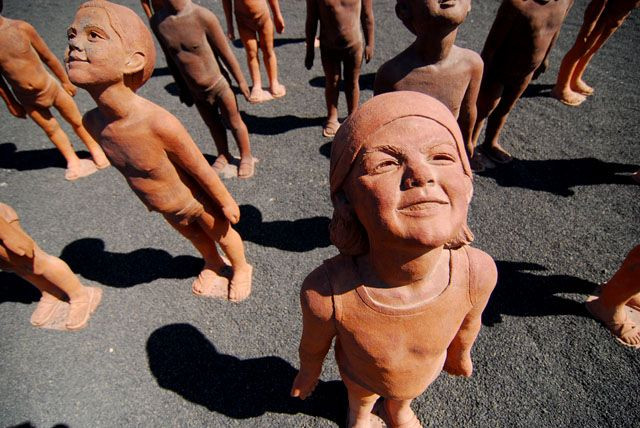Bystander Effect Still Evident In Children, Despite Reputation For Altruism

Kids have long been the gold standard for innocence, generosity, and altruistic behavior. When a child falls down on the playground, another is quick to rush in with emotional support, as if the need to help were instinctual. A new study, however, casts something of a sour light on this otherwise shining model of virtue.
If kids are the gold standard for innocence, adults are the aluminum. Time and again, psychologists have observed the social phenomenon known as the bystander effect: When a person needs help, onlookers will assume someone else in the crowd will step in, so nobody ends up helping. The effect was first described after the brutal, now infamous murder of Kitty Genovese in 1964 and has since come to influence the first-responder protocol of assigning a specific person, not a random somebody, to call 9-1-1.
But for all their irksome antics, kids generally strike us as immune from these shortcomings. Psychologists from the Max Planck Institute have new evidence suggesting that may not be the case. Recently, a team of researchers recruited 60 5-year-olds to participate in an experiment. In the room were three kids, two of whom were in on the study and had been given a script to follow. The third child was the mark. The study began with a woman “accidentally” spilling some water on the floor, before telling the kids it might happen again, so she placed some paper towels nearby. When her prediction came true, she groaned and made her unhappiness obvious. If no one rushed to help her, she asked if one of the kids would hand her a paper towel. If none did, she dried the floor herself.
As it turned out, the bystander effect was in full-swing. Kids were less likely to help if the other kids were present, and those that helped acted much slower than kids who were alone. In follow-up interviews, most of the children acknowledged the woman was asking for help. To the researchers, this showed the kids knew what was going on, but chose to avoid helping anyway. Shyness was also ruled out, as a separate condition put two of the kids behind a barrier, yet the third child still helped.
"The children in our study helped at very high levels only when responsibility was clearly attributable to them," explained psychological scientist and lead researcher Maria Plötner in a statement. "These findings suggest that children at this age take responsibility into account when deciding whether to help."
In truth, it may be more accurate to say there isn’t just one bystander effect, but multiple bystander effects. Since the two social psychologists John Darley and Bibb Latané began studying the phenomenon in 1968, following Genovese’s murder, much of the research into the bystander effect has sought to determine which circumstances make for particular outcomes.
Broadly speaking, context matters a lot. Bystanders are most compelled to act when the emergency feels immediate and when they bear the most responsibility. But language and culture also play a role. In one study conducted in 1976, people were far more likely to intervene to save a woman from a supposed attacker (65 percent versus 19 percent) when the woman yelled “Get away from me, I don’t know you” than when she yelled “Get away from me, I don’t know why I ever married you.” In both cases, bystanders observed the same distress, but they interpreted it differently depending on whether the woman appeared to know the attacker. As a result, their behavior changed.
The latest study can't say for certain whether the bystander effect is a learned behavior or not, but it does suggest parents have teachable moments to instill reactivity in their kids. "It might be a good idea to teach children about the bystander effect and responsibility in helping situations from early in development," Plötner told Medical Daily in an email. That way, their first instinct isn't to scan for who else might jump in. They can do it themselves, and possibly save a life.
Source: Plötner M, Over H, Carpenter M, Tomasello M. Young Children Show the Bystander Effect in Helping Situations. Psychological Science. 2015.



























